深度学习:GPT-2的MindSpore实践
GPT-2简介
GPT-2是一个由OpenAI于2019年提出的自回归语言模型。与GPT-1相比,仍基于Transformer Decoder架构,但是做出了一定改进。
模型规格上:
GPT-1有117M参数,为下游微调任务提供预训练模型。
GPT-2显著增加了模型规模,提供了多种模型,如:124M、355M、774M和1.5B
数据集大小上:
GPT-2训练于数据量约有45GB的WebText数据集。数据集的数据收集于Reddit中的网络文章。
模型架构上:
GPT-2维持了GPT-1的Decoder-only架构,但是讲Decoder Block增加至48层,采用了更深层的注意力机制和更大的前馈网络维度并改进了正则化。同时,GPT-2加入了可学习的位置编码。将Layer Norm前置于模型获得输入后。一个额外的Layer Norm被添加于最后一个自注意力Block后。
参数初始化上:
参数初始化上,使用了一个Special Scaled Initialization。Special Scaled Initialization是Xavier Normalization的一种变体,使用了额外的缩放。将因子n调整为残差连接的次数,也就是block数量的两倍。
任务设定
一般语言模型的训练目标设置为:
但是,GPT-2通过同样的无监督模型来完成多个既定任务,学习目标变为:
这种修改被称为任务设定。对于同样的输入,模型应该根据不同的任务输出不同的结果。
翻译任务

文本总结

其他下游任务:基于zero-shot或few-shot的文本生成、文本总结、文本翻译、QA问答、文本分类。
基于MindSpore的GPT-2实践
复习Masked Multi Self-Attention
#安装mindnlp 0.4.0套件
!pip install mindnlp==0.4.0
!pip uninstall soundfile -y
!pip install https://ms-release.obs.cn-north-4.myhuaweicloud.com/2.3.1/MindSpore/unified/aarch64/mindspore-2.3.1-cp39-cp39-linux_aarch64.whl --trusted-host ms-release.obs.cn-north-4.myhuaweicloud.com -i https://pypi.tuna.tsinghua.edu.cn/simple假设一个批大小为1,序列长度为10,特征维度为768的输入
# GPT-2 Masked Self-Attention# assume an input of self-attention x, input_dim is 768
batch_size, seq_len, embed_dim = 1, 10, 768x = Tensor(np.random.randn(batch_size, seq_len, embed_dim), mindspore.float32)
x.shape将输入复制三份作为Q、K、V。

import mindspore.ops as ops
from mindnlp.transformers.ms_utils import Conv1D# an input will be multipled by three matrixs Wq, Wk, Wv
# concat the three matrixs, you will get a matrix of (768, 768*3)
# x matmul matrix, the output would be (batch_size, seq_len, 768*3)
c_attn = Conv1D(3 * embed_dim, embed_dim)
output = c_attn(x)
# split the output into q, k, v
query, key, value = ops.Split(axis=2, output_num=3)(output)
query.shape, key.shape, value.shape将注意力分头
# split self-attention into multi_head attention
def split_heads(tensor, num_heads, attn_head_size):'''Spilit hidden_size dim into attn_head_size and num_headsArgs:tensor: tensor to splitnum_heads: how many heads to splitattn_head_size: hidden_size of each headReturn:Multi-Head tensor'''new_shape = tensor.shape[:-1] + (num_heads, attn_head_size)tensor = tensor.view(new_shape)return ops.transpose(tensor, (0, 2, 1, 3))num_heads = 12
attn_head_size = embed_dim // num_headsquery = split_heads(query, num_heads, attn_head_size)
key = split_heads(key, num_heads, attn_head_size)
value = split_heads(value, num_heads, attn_head_size)query.shape, key.shape, value.shape将Q、K相乘,得到注意力分数
# get self-attention score
attn_weights = ops.matmul(query, key.swapaxes(-1, -2))
attn_weights.shape将注意力分数加上掩码,防止模型看见“未来”的数据

# get mask attn_weighs
max_positions = seq_len
# create a mask matrix
bias = Tensor(np.tril(np.ones((max_positions, max_positions))).reshape((1, 1, max_positions, max_positions)), mindspore.bool_)# apply Mask Matrix to get masked scores
# this normalization helps stabilize gradients
# and is common in scaled dot-product attention mechanisms
attn_weights = attn_weights / ops.sqrt(ops.scalar_to_tensor(value.shape[-1]))query_length, key_length = query.shape[-2], key.shape[-2]
causal_mask = bias[:, :, key_length - query_length: key_length, :key_length].bool()
mask_value = Tensor(np.finfo(np.float32).min, dtype=attn_weights.dtype)
attn_weights = ops.where(causal_mask, attn_weights, mask_value)
经过SoftMax层,得到掩码分数

# get attn scores
attn_weights = ops.softmax(attn_weights, axis=-1)掩码分数与V相乘,得到注意力输出
# get output of Masked Self-Attention
attn_output = ops.matmul(attn_weights, value)
attn_output.shape将头合并
# merge multi heads
def merge_heads(tensor, num_heads, attn_head_size):'''Merge attn_head_size dim and num_attn_heads dim to hidden_size'''tensor = ops.transpose(tensor, (0, 2, 1, 3))new_shape = tensor.shape[:-2] + (num_heads * attn_head_size, )return tensor.view(new_shape)attn_output = merge_heads(attn_output, num_heads, attn_head_size)
attn_output.shape将输出与Wv相乘,得到最终输出
# project Attnetion results with Wv
projection = Conv1D(embed_dim, embed_dim)
attn_output = projection(attn_output)
attn_output.shape基于MindSpore的GPT2文本摘要
基于GPT-2实现一个简单的文本摘要。
# 数据加载与预处理
from mindnlp.utils import http_get# download dataset
url = 'https://download.mindspore.cn/toolkits/mindnlp/dataset/text_generation/nlpcc2017/train_with_summ.txt'
path = http_get(url, './')from mindspore.dataset import TextFileDataset# load dataset
dataset = TextFileDataset(str(path), shuffle =False)
dataset.get_dataset_size()mini_dataset, _ = dataset.split([0.001, 0.999], randomize=False)
train_dataset, test_dataset = mini_dataset.split([0.9, 0.1], randomize=False)import json
import numpy as np
def process_dataset(dataset, tokenizer, batch_size=4, max_seq_len=1024, shuffle=False):'''数据预处理:原始数据格式:article:[CLS] article_context [SEP]summary:[CLS] summary_context [SEP]预处理后的数据格式:[CLS] article_context [SEP] summary_context [SEP]'''def read_map(text):'''sub function to change the form of data'''data = json.loads(text.tobytes())print(data)return np.array(data['article']), np.array(data['summarization'])def merge_and_pad(article, summary):# tokenization, pad to max_seq_length, only article will be truncatedtokenized = tokenizer(text=article, text_pari=summary, padding='max_length', truncation='only_first', max_length=max_seq_len)# Returns tokenized input IDs for both the input (input_ids) and the labels.return tokenized['input_ids'], tokenized['input_ids']# 'text': Input column to process.# ['article', 'summary']: Names of the output columns after processing.dataset = dataset.map(read_map, output_columns=['article', 'summary'])dataset = dataset.map(merge_and_pad, ['article', 'summary'], ['input_ids', 'labels'])dataset = dataset.batch(batch_size)if shuffle:dataset = dataset.shuffle(batch_size)return datasetfrom mindnlp.transformers import BertTokenizer# Load BERT-base-Chinese tokenizer
tokenizer = BertTokenizer.from_pretrained('bert-base-chinese')# load train dataset
train_dataset = process_dataset(train_dataset, tokenizer, batch_size=1)# model architecture of GPT2ForSummarization
from mindnlp.transformers import GPT2LMHeadModelclass GPT2ForSummarization(GPT2LMHeadModel):def forward(self, input_ids=None, attention_mask=None, labels=None):outputs = super().forward(input_ids=input_ids, attention_mask=attention_mask)shift_logits = outputs.logits[..., :-1, :]shift_labels = labels[..., 1:]loss = ops.cross_entropy(shift_logits.view(-1, shift_logits.shape[-1]), shift_labels.view(-1), ignore_index=tokenizer.pad_token_id)return (loss, )num_epochs = 1
warmup_steps = 100
lr = 1.5e-4
max_grad_norm = 1.0
num_training_steps = num_epochs * train_dataset.get_dataset_size()from mindspore import nn
from mindnlp.transformers import GPT2Config, GPT2LMHeadModelconfig = GPT2Config(vocab_size=len(tokenizer))
model = GPT2ForSummarization(config)from mindnlp.engine import TrainingArgumentstraining_args = TrainingArguments(output_dir="gpt2_summarization",save_steps=train_dataset.get_dataset_size(),save_total_limit=3,logging_steps=1000,max_steps=num_training_steps,learning_rate=lr,max_grad_norm=max_grad_norm,warmup_steps=warmup_steps)from mindnlp.engine import Trainertrainer = Trainer(model=model,args=training_args,train_dataset=train_dataset,
)trainer.train()def process_test_dataset(test_dataset, tokenizer, batch_size=1, max_seq_len=1024, max_summary_len=100):def read_map(text):data = json.loads(text.tobytes())return np.array(data['article']), np.array(data['summarization'])def pad(article):tokenized = tokenizer(text=article, truncation=True, max_length=max_seq_len-max_summary_len)return tokenized['input_ids']test_dataset = test_dataset.map(read_map, output_columns=['article', 'summary'])test_dataset = test_dataset.map(pad, 'article', ['input_ids'])test_dataset = test_dataset.batch(batch_size)return test_datasettokenizer_test = BertTokenizer.from_pretrained('bert-base-chinese')batched_test_dataset = process_test_dataset(test_dataset, tokenizer_test, batch_size=1)model = GPT2LMHeadModel.from_pretrained('./gpt2_summarization/checkpoint-45', config=config)model.set_train(False)
model.config.eos_token_id = model.config.sep_token_id
i = 0
for (input_ids, raw_summary) in batched_test_dataset.create_tuple_iterator():output_ids = model.generate(input_ids, max_new_tokens=50, num_beams=5, no_repeat_ngram_size=2)output_text = tokenizer.decode(output_ids[0].tolist())print('input', tokenizer.decode(input_ids[0].tolist()))print()print(output_text)i += 1if i == 1:break相关文章:

深度学习:GPT-2的MindSpore实践
GPT-2简介 GPT-2是一个由OpenAI于2019年提出的自回归语言模型。与GPT-1相比,仍基于Transformer Decoder架构,但是做出了一定改进。 模型规格上: GPT-1有117M参数,为下游微调任务提供预训练模型。 GPT-2显著增加了模型规模&…...

【Oracle11g SQL详解】ORDER BY 子句的排序规则与应用
ORDER BY 子句的排序规则与应用 在 Oracle 11g 中,ORDER BY 子句用于对查询结果进行排序。通过使用 ORDER BY,可以使返回的数据按照指定的列或表达式以升序或降序排列,便于数据的分析和呈现。本文将详细讲解 ORDER BY 子句的规则及其常见应用…...
【第15篇(完结):讨论和未来展望】)
YOLO系列论文综述(从YOLOv1到YOLOv11)【第15篇(完结):讨论和未来展望】
总结 0 前言1 YOLO与人工通用智能(AGI)2 YOLO作为“能够行动的神经网络”3 具身人工智能(EAI)4 边缘设备上的YOLO5 评估统计指标的挑战6 YOLO与环境影响 YOLO系列博文: 【第1篇:概述物体检测算法发展史、YO…...

Java设计模式 —— 【创建型模式】原型模式(浅拷贝、深拷贝)详解
文章目录 前言原型模式一、浅拷贝1、案例2、引用数据类型 二、深拷贝1、重写clone()方法2、序列化 总结 前言 先看一下传统的对象克隆方式: 原型类: public class Student {private String name;public Student(String name) {this.name name;}publi…...

SciAssess——评估大语言模型在科学文献处理中关于模型的记忆、理解和分析能力的基准
概述 大规模语言模型(如 Llama、Gemini 和 GPT-4)的最新进展因其卓越的自然语言理解和生成能力而备受关注。对这些模型进行评估对于确定其局限性和潜力以及促进进一步的技术进步非常重要。为此,人们提出了一些特定的基准来评估大规模语言模型…...

SQLModel与FastAPI结合:构建用户增删改查接口
SQLModel简介 SQLModel是一个现代化的Python库,旨在简化与数据库的交互。它结合了Pydantic和SQLAlchemy的优势,使得定义数据模型、进行数据验证和与数据库交互变得更加直观和高效。SQLModel由FastAPI的创始人Sebastin Ramrez开发,专为与FastA…...

【RISC-V CPU debug 专栏 2.3 -- Run Control】
文章目录 Run ControlHart 运行控制状态位状态信号操作流程时间与实现注意事项Run Control 在 RISC-V 调试架构中,运行控制模块通过管理多个状态位来对硬件线程(harts)的执行进行调节和控制。这些状态位帮助调试器请求暂停或恢复 harts,并在 hart 复位时进行控制。以下是运…...

探索 IntelliJ IDEA 中 Spring Boot 运行配置
前言 IntelliJ IDEA 作为一款功能强大的集成开发环境(IDE),为 Spring Boot 应用提供了丰富的运行配置选项,定义了如何在 IntelliJ IDEA 中运行 Spring Boot 应用程序,当从主类文件运行应用程序时,IDE 将创建…...

三除数枚举
给你一个整数 n 。如果 n 恰好有三个正除数 ,返回 true ;否则,返回 false 。 如果存在整数 k ,满足 n k * m ,那么整数 m 就是 n 的一个 除数 。 输入:n 4 输出:true 解释:4 有三…...

【051】基于51单片机温度计【Proteus仿真+Keil程序+报告+原理图】
☆、设计硬件组成:51单片机最小系统DS18B20温度传感器LCD1602液晶显示按键设置蜂鸣器LED灯。 1、本设计采用STC89C51/52、AT89C51/52、AT89S51/52作为主控芯片; 2、采用DS18B20温度传感器测量温度,并且通过LCD1602实时显示温度;…...

[Java]微服务之服务保护
雪崩问题 微服务调用链路中的某个服务故障,引起整个链路中的所有微服务都不可用,这就是雪崩 雪崩问题产生的原因是什么? 微服务相互调用,服务提供者出现故障或阻塞。服务调用者没有做好异常处理,导致自身故障。调用链中的所有服…...

自动驾驶目标检测融合全貌
1、early fusion 早期融合,特点用到几何空间转换3d到2d或者2d到3d的转换,用像素找点云或者用点云找像素。 2、deep fusion 深度融合,也是特征级别融合,也叫多模态融合,如bevfusion范式 3、late fusion 晚融合&#x…...
的测试方法和测试用例)
消息框(Message Box)的测试方法和测试用例
我来帮你了解消息框(Message Box)的测试方法和测试用例的编写。 我已经创建了一个测试用例示例,让我为你解释消息框测试的主要方面: 测试维度: 功能性测试:验证消息框的基本功能是否正常样式测试:确认不同类型消息框…...

Ubuntu 包管理
APT&dpkg 查看已安装包 查看所有已经安装的包 dpkg -l 查找包 apt search <package_name>搜索软件包列表,找到与搜索关键字匹配的包 dpkg与grep结合查找特定的包 dpkg -s <package>:查看某个安装包的详细信息 安装包 apt安装命令 更新…...
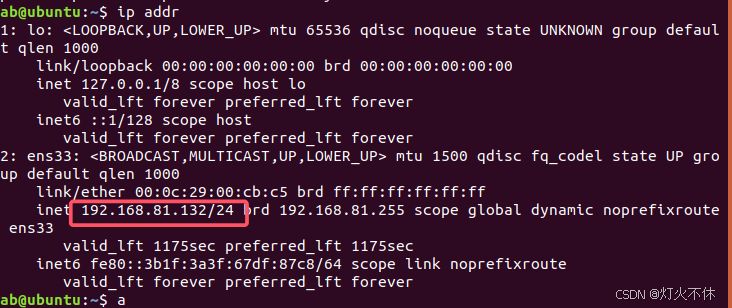
[Ubuntu] linux之Ubuntu18.04的下载及在虚拟机中详细安装过程(附有下载链接)
前言 ubuntu 链接:https://pan.quark.cn/s/283509d0d36e 提取码:dfT1 链接失效(可能被官方和谐)可评论或私信我重发 下载压缩包后解压 !!安装路径不要有中文 下载后解压得到.iso文件,不要放在…...

ffmpeg安装(windows)
ffmpeg安装-windows 前言ffmpeg安装路径安装说明 前言 ffmpeg的安装也是开箱即用的,并没有小码哥说的那么难 ffmpeg安装路径 这就下载好了! 安装说明 将上面的bin目录加入到环境变量,然后在cmd中测试一下: C:\Users\12114\Desktop\test\TaskmgrPlayer\x64\Debug>ffmpe…...

服务器数据恢复—raid6阵列硬盘被误重组为raid5阵列的数据恢复案例
服务器存储数据恢复环境: 存储中有一组由12块硬盘组建的RAID6阵列,上层linux操作系统EXT3文件系统,该存储划分3个LUN。 服务器存储故障&分析: 存储中RAID6阵列不可用。为了抢救数据,运维人员使用原始RAID中的部分…...

linux内核编译启动总结
linux kernel 编译 升级汇总 写在前面内核编译获取kernel代码开始前的准备工作 编译过程1\.解压与净化将下载好的linux内核解压至/usr/src 2\. 得到源代码后,将其净化3\. 配置要进行编译的内核4.编译内核. (15分钟)5.编译模块.方法1:方法2: 6…...

Android Studio的AI工具插件使用介绍
Android Studio的AI工具插件使用介绍 一、前言 Android Studio 的 AI 工具插件具有诸多重要作用,以下是一些常见的方面: 代码生成与自动补全 代码优化与重构 代码解读 学习与知识获取 智能搜索与资源推荐实际使用中可以添加注释,解读某段代…...

本地部署 WireGuard 无需公网 IP 实现异地组网
WireGuard 是一个高性能、极简且易于配置的开源虚拟组网协议。使用路由侠内网穿透使其相互通讯。 第一步,服务端(假设为公司电脑)和客户端(假设为公司外的电脑)安装部署 WireGuard 1,点此下载(…...

内存分配函数malloc kmalloc vmalloc
内存分配函数malloc kmalloc vmalloc malloc实现步骤: 1)请求大小调整:首先,malloc 需要调整用户请求的大小,以适应内部数据结构(例如,可能需要存储额外的元数据)。通常,这包括对齐调整,确保分配的内存地址满足特定硬件要求(如对齐到8字节或16字节边界)。 2)空闲…...
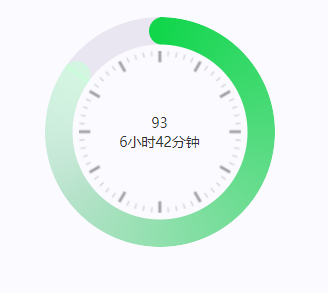
css实现圆环展示百分比,根据值动态展示所占比例
代码如下 <view class""><view class"circle-chart"><view v-if"!!num" class"pie-item" :style"{background: conic-gradient(var(--one-color) 0%,#E9E6F1 ${num}%),}"></view><view v-else …...
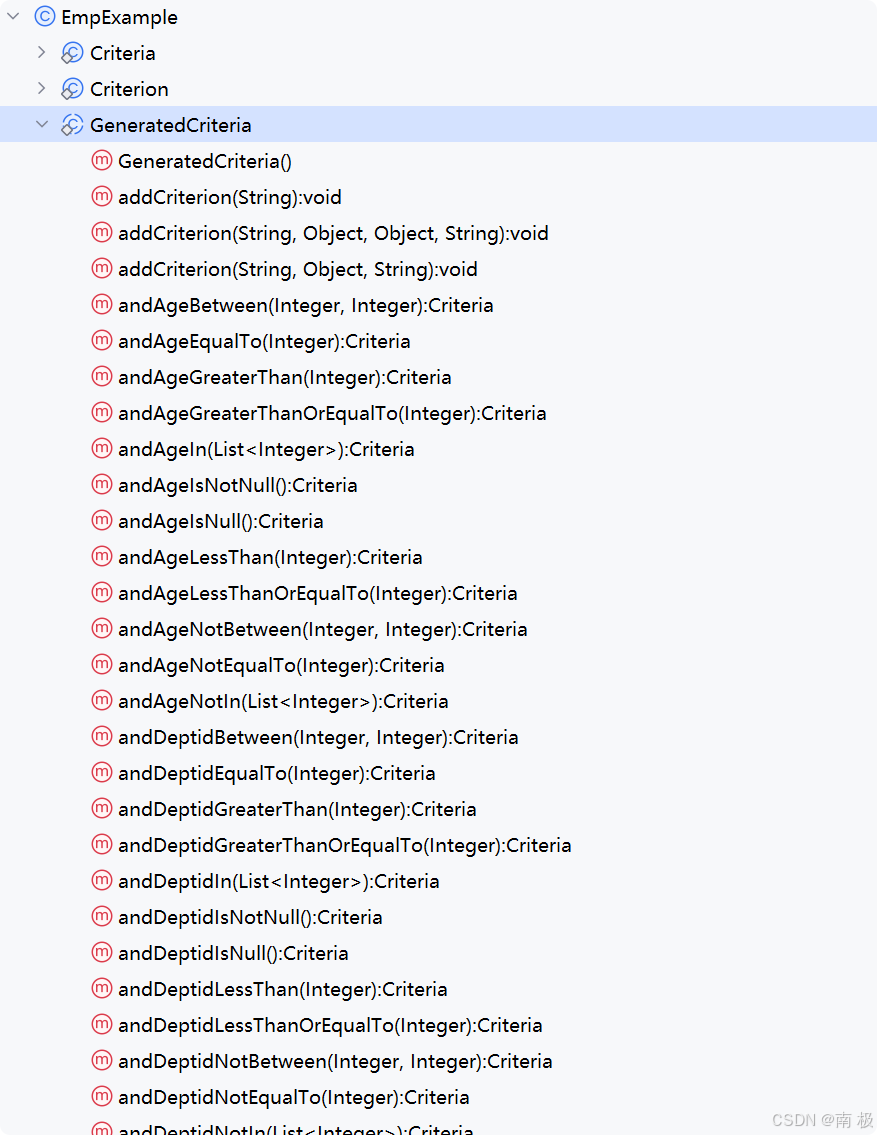
Mybatis逆向工程,动态创建实体类、条件扩展类、Mapper接口、Mapper.xml映射文件
今天呢,博主的学习进度也是步入了Java Mybatis 框架,目前正在逐步杨帆旗航。 那么接下来就给大家出一期有关 Mybatis 逆向工程的教学,希望能对大家有所帮助,也特别欢迎大家指点不足之处,小生很乐意接受正确的建议&…...
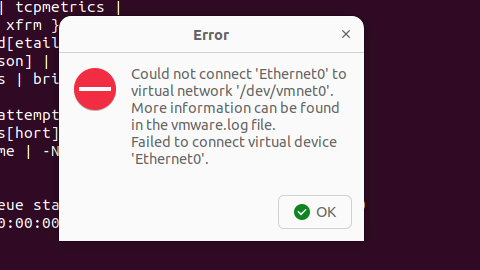
解决Ubuntu22.04 VMware失败的问题 ubuntu入门之二十八
现象1 打开VMware失败 Ubuntu升级之后打开VMware上报需要安装vmmon和vmnet,点击确认后如下提示 最终上报fail 解决方法 内核升级导致,需要在新内核下重新下载编译安装 查看版本 $ vmware -v VMware Workstation 17.5.1 build-23298084$ lsb_release…...

OpenPrompt 和直接对提示词的嵌入向量进行训练有什么区别
OpenPrompt 和直接对提示词的嵌入向量进行训练有什么区别 直接训练提示词嵌入向量的核心区别 您提到的代码: prompt_embedding = initial_embedding.clone().requires_grad_(True) optimizer = torch.optim.Adam([prompt_embedding...

实现弹窗随键盘上移居中
实现弹窗随键盘上移的核心思路 在Android中,可以通过监听键盘的显示和隐藏事件,动态调整弹窗的位置。关键点在于获取键盘高度,并计算剩余屏幕空间以重新定位弹窗。 // 在Activity或Fragment中设置键盘监听 val rootView findViewById<V…...

【数据分析】R版IntelliGenes用于生物标志物发现的可解释机器学习
禁止商业或二改转载,仅供自学使用,侵权必究,如需截取部分内容请后台联系作者! 文章目录 介绍流程步骤1. 输入数据2. 特征选择3. 模型训练4. I-Genes 评分计算5. 输出结果 IntelliGenesR 安装包1. 特征选择2. 模型训练和评估3. I-Genes 评分计…...
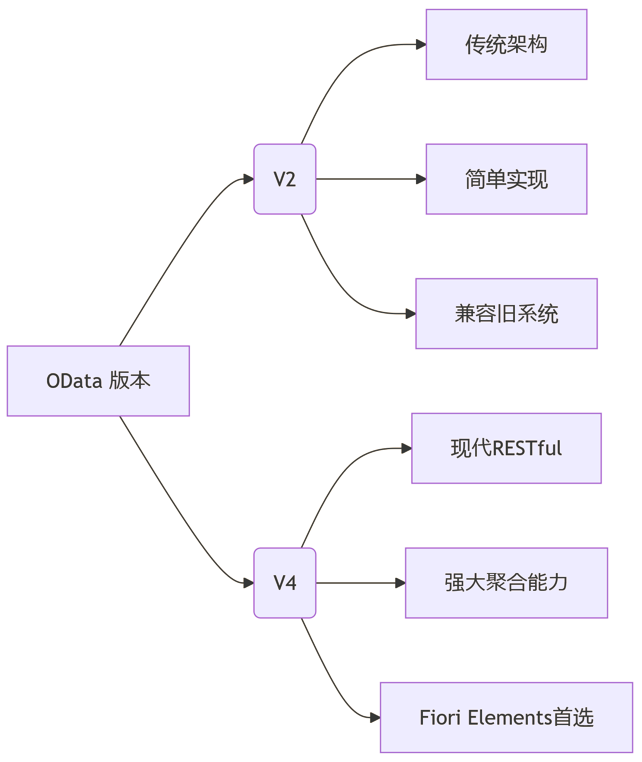
SAP学习笔记 - 开发26 - 前端Fiori开发 OData V2 和 V4 的差异 (Deepseek整理)
上一章用到了V2 的概念,其实 Fiori当中还有 V4,咱们这一章来总结一下 V2 和 V4。 SAP学习笔记 - 开发25 - 前端Fiori开发 Remote OData Service(使用远端Odata服务),代理中间件(ui5-middleware-simpleproxy)-CSDN博客…...

10-Oracle 23 ai Vector Search 概述和参数
一、Oracle AI Vector Search 概述 企业和个人都在尝试各种AI,使用客户端或是内部自己搭建集成大模型的终端,加速与大型语言模型(LLM)的结合,同时使用检索增强生成(Retrieval Augmented Generation &#…...

Python ROS2【机器人中间件框架】 简介
销量过万TEEIS德国护膝夏天用薄款 优惠券冠生园 百花蜂蜜428g 挤压瓶纯蜂蜜巨奇严选 鞋子除臭剂360ml 多芬身体磨砂膏280g健70%-75%酒精消毒棉片湿巾1418cm 80片/袋3袋大包清洁食品用消毒 优惠券AIMORNY52朵红玫瑰永生香皂花同城配送非鲜花七夕情人节生日礼物送女友 热卖妙洁棉…...
